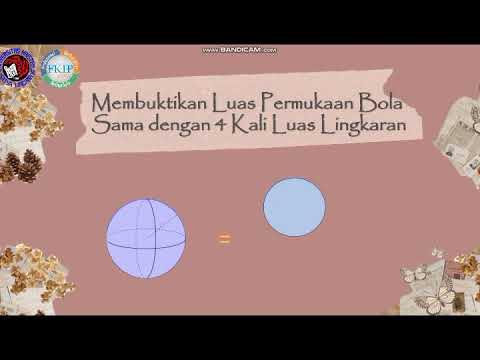PENYAJIAN DATA DALAM BENTUK DIAGRAM LINGKARAN || PENGOLAHAN DATA
Summary
TLDRThis video provides an educational lesson on circle diagrams, explaining how they visually represent data by dividing a circle into sections. The video walks through an example using data on the occupations of parents of 5th-grade students at SD Permata. It explores how to interpret the diagram, answering questions like the percentage of parents working as traders, the most common occupation, and how to calculate the number of parents with certain jobs based on the class size. The video concludes with a friendly reminder to keep learning and thanks viewers for watching.
Takeaways
- 😀 A circle diagram (diagram lingkaran) represents data in the form of a circle divided into several parts or wedges.
- 😀 The circle diagram helps visualize data distribution, making it easier to understand percentage breakdowns.
- 😀 In the example provided, the circle diagram shows the occupations of parents of fifth-grade students at SD Permata.
- 😀 27% of parents are farmers, the highest percentage among all the categories presented in the diagram.
- 😀 10.5% of parents work as government employees (PNS).
- 😀 25% of parents are private sector employees (karyawan swasta).
- 😀 14.5% of parents work as traders (pedagang).
- 😀 23% of parents have other occupations categorized as 'others.'
- 😀 The video explains how to read the data from the circle diagram and answer related questions.
- 😀 One example question asks for the percentage of parents who work as traders, which is 14.5%.
- 😀 Another question involves calculating the number of parents who work as private sector employees, given a class size of 40 students. The answer is 10 parents, based on the 25% figure.
Q & A
What is the main topic of the video?
-The main topic of the video is about circle diagrams and how to interpret data presented in this format.
What is a circle diagram?
-A circle diagram is a chart that presents data in the form of a circle divided into sections, or wedges, each representing a different category of data.
How is the data in the circle diagram presented?
-The data in the circle diagram is presented as a percentage, where each section of the circle represents the proportion of a specific category.
What data is presented in the video using a circle diagram?
-The data presented is about the occupations of the parents of fifth-grade students at SD Permata.
What occupation is the most common among the parents of students?
-The most common occupation among the parents of students is farming, with 27% of parents working in this field.
What is the percentage of parents working as civil servants (PNS)?
-The percentage of parents working as civil servants (PNS) is 10.5%.
How many parents work as private employees (karyawan swasta) according to the diagram?
-25% of parents work as private employees (karyawan swasta).
How many parents work as traders (pedagang) according to the data?
-14.5% of parents work as traders (pedagang).
If there are 40 students in the class, how many parents work as private employees?
-25% of 40 students equals 10 parents, so 10 parents work as private employees.
What percentage of parents fall into the 'other' occupation category?
-23% of parents fall into the 'other' occupation category.
Outlines

This section is available to paid users only. Please upgrade to access this part.
Upgrade NowMindmap

This section is available to paid users only. Please upgrade to access this part.
Upgrade NowKeywords

This section is available to paid users only. Please upgrade to access this part.
Upgrade NowHighlights

This section is available to paid users only. Please upgrade to access this part.
Upgrade NowTranscripts

This section is available to paid users only. Please upgrade to access this part.
Upgrade Now5.0 / 5 (0 votes)





